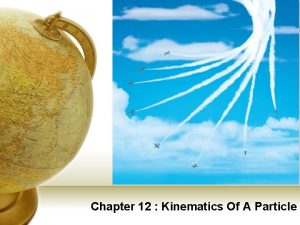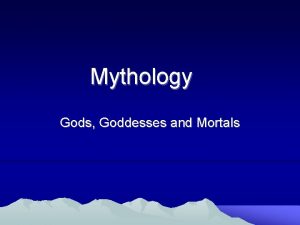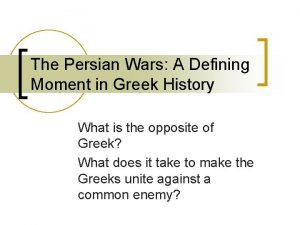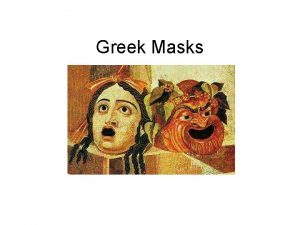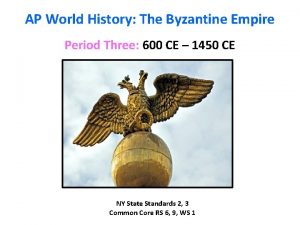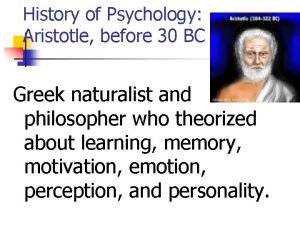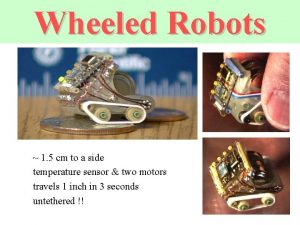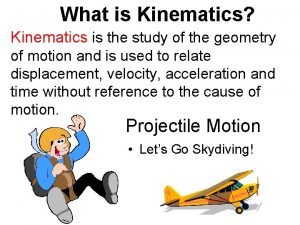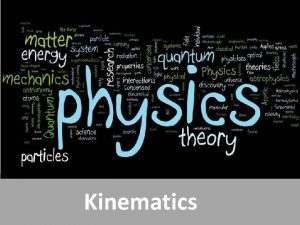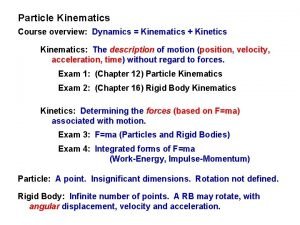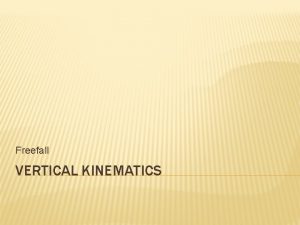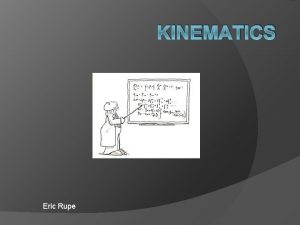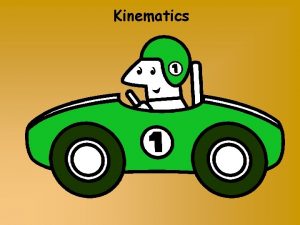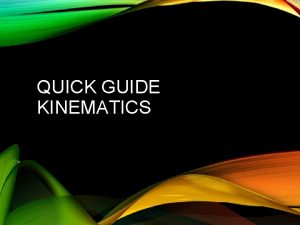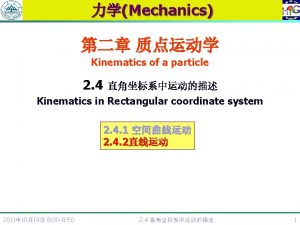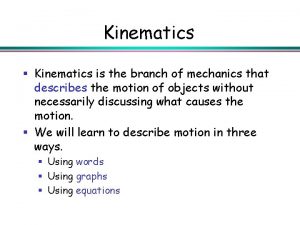Chapter 4 Mechanics Kinematics History of Mechanics Greek















- Slides: 15

Chapter 4 Mechanics: Kinematics

History of Mechanics Greek philosophers like Aristotle – Solid matter falls Ex: apple – Ethereal matter rises Ex: smoke, vapor Galileo said scientist should examine motion and describe it using math – Some resisted because ideas contradicted Catholic church

History of Mechanics Copernicus showed a sun-centered model Albert Einstein provided a complete cause and effect model Sir Isaac Newton found 3 laws of motion

Do you trust physics? What happens?

Mechanics Modern study of motion (the pushes & pulls as well as how object responds) 1) Kinematics: Description of how things move 2) Dynamics: Description of what causes things to move 3) Statics: Description of how stationary things react to pushes & pulls

Physical Systems System – Boundary or imaginary box created by scientists Everything inside is part of system Everything outside is part of surroundings – Allows scientists to limit the objects or processes they are studying – Was there a change?

Frames of Reference Is the Eiffel Tower moving?

Frames of Reference Point of reference – Location from which observations are made – Needed for kinematics Used for comparison Frame of reference – Geometric space containing point of reference – Chosen to be helpful in studying motion Like a worldview (place from which observations are made)

Frames of Reference The motion of the Eiffel Tower is 0 km/hr – What is your point of reference? – Frame of reference? The motion of the Eiffel Tower is 30 km/s – What is your point of reference? – Frame of reference?

Different Reference Frames Fixed reference frame – Motion in straight line, constant speed – Ex: car travels 50 km/h

Different Reference Frames Accelerated reference frame – Reference frame is moving with the object – Ex: passenger’s view of one care from a moving car

Different Reference Frames Rotational reference frame – Rotational object and its axis are stationary – Ex: rider on a merry-go-round

Coordinate Axis Useful for motion in one direction – Ex: care moving in straight line – Axis is parallel to direction of motion Consists of a line with units (shows motion) Origin is placed at the point of reference (where observations are being made)

Time ti = initial time tf = final time Δt = t f - t i – Time interval for event – Ex: How long did it take you to brush your teeth if you started at 7: 25 AM and ended at 7: 27 AM? change in time

Scalar and Vector Scalar: described using one piece of information – Ex: speed, volume, etc. (5 m. L, 5 km/h, 10 cc) – May be positive, negative, or zero Vector: described using two pieces of information, number & direction – Ex: velocity (speed in a given direction) such as 5 km/h north – Represented by an arrow
 Aplusphysics kinematics-horizontal kinematics
Aplusphysics kinematics-horizontal kinematics Define fluid kinematics
Define fluid kinematics Chapter 12 kinematics of a particle solutions
Chapter 12 kinematics of a particle solutions What is the greek miracle in greek mythology
What is the greek miracle in greek mythology The defining moment in greek history is the wars
The defining moment in greek history is the wars Colonial williamsburg floral design time period
Colonial williamsburg floral design time period Greek floral designs
Greek floral designs Greek theatre history
Greek theatre history Greek masks history
Greek masks history Istanbul definition ap world history
Istanbul definition ap world history What is greek tragedy
What is greek tragedy Greek history
Greek history Greek history of psychology
Greek history of psychology Tricycle kinematics
Tricycle kinematics What is kinematics
What is kinematics Kinematics 2d formulas
Kinematics 2d formulas


